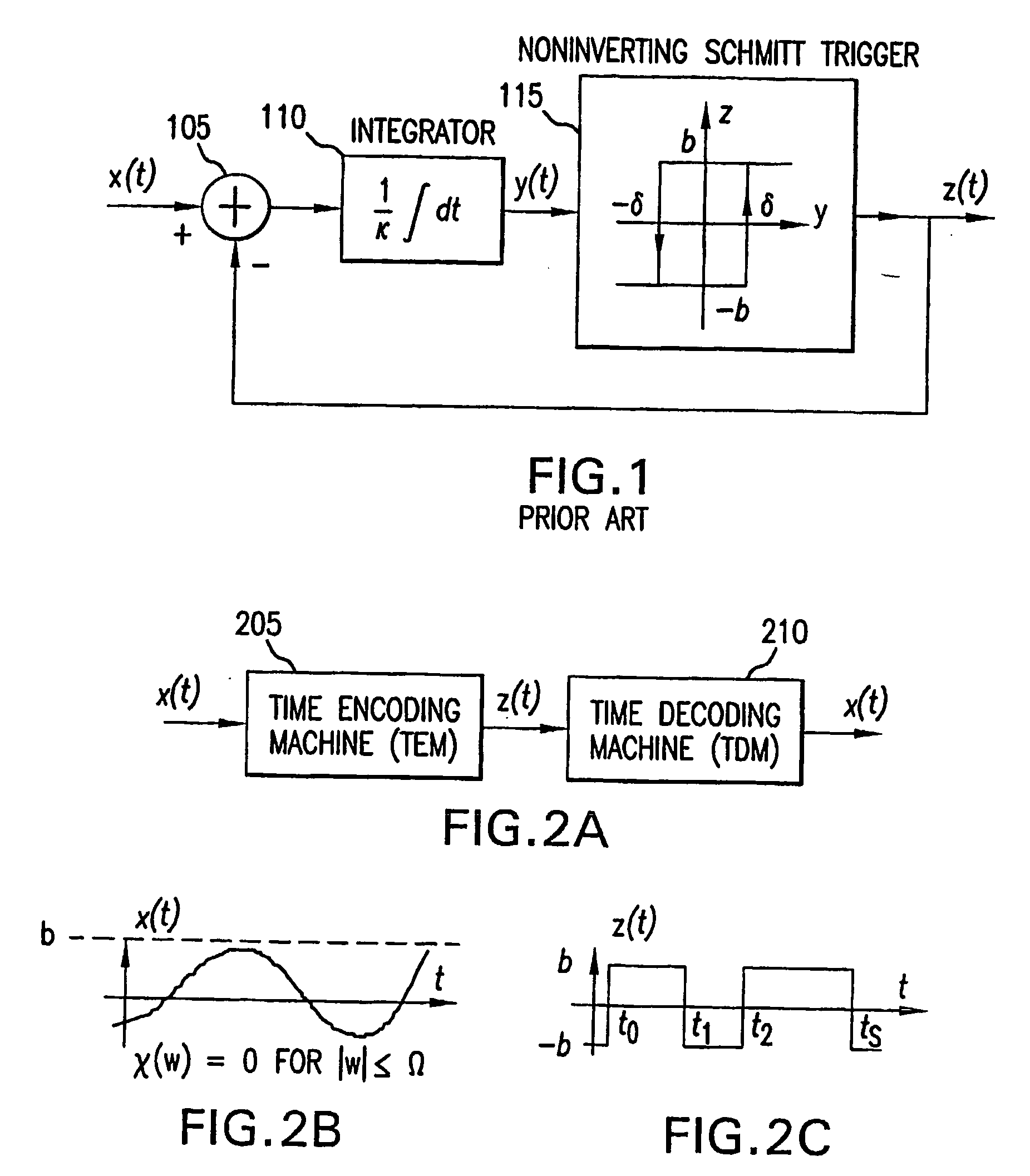Multichannel time encoding and decoding of a signal
- Summary
- Abstract
- Description
- Claims
- Application Information
AI Technical Summary
Benefits of technology
Problems solved by technology
Method used
Image
Examples
Embodiment Construction
[0033] The present invention uses time encoding to digitize an analog signal and also uses appropriate non-linear decoding methods for subsequent recovery of the input signal. Thus, the systems and methods described apply to analog-to-digital (A / D) conversion and digital-to-analog (D / A) conversion using time encoding of a signal. In particular, the current invention employs a multichannel encoding and decoding approach which provides reduced average trigger times from each of the time encoding machines (TEM) used in the signal encoding process.
[0034] In the present application, the operation and implementation of time encoding machines (TEM) and time decoding machines (TDM) are provided. As used herein, a TEM is a circuit or process which receives a bounded input signal and generates an asynchronous set of binary transitions, the timing of which are related to the amplitude of the input signal. More generally, a TEM is a circuit or process which maps amplitude information into time...
PUM
 Login to View More
Login to View More Abstract
Description
Claims
Application Information
 Login to View More
Login to View More - R&D
- Intellectual Property
- Life Sciences
- Materials
- Tech Scout
- Unparalleled Data Quality
- Higher Quality Content
- 60% Fewer Hallucinations
Browse by: Latest US Patents, China's latest patents, Technical Efficacy Thesaurus, Application Domain, Technology Topic, Popular Technical Reports.
© 2025 PatSnap. All rights reserved.Legal|Privacy policy|Modern Slavery Act Transparency Statement|Sitemap|About US| Contact US: help@patsnap.com



